- Home
- Paul Doherty
Death's Dark Valley
Death's Dark Valley Read online
Copyright © 2019 Paul Doherty
The right of Paul Doherty to be identified as the Author of the Work has been asserted by him in accordance with the Copyright, Designs and Patents Act 1988.
First published in Great Britain in 2019
by HEADLINE PUBLISHING GROUP
First published as an Ebook in Great Britain in 2019
by HEADLINE PUBLISHING GROUP
Apart from any use permitted under UK copyright law, this publication may only be reproduced, stored, or transmitted, in any form, or by any means, with prior permission in writing of the publishers or, in the case of reprographic production, in accordance with the terms of licences issued by the Copyright Licensing Agency.
All characters in this publication are fictitious and any resemblance to real persons, living or dead, is purely coincidental.
Cataloguing in Publication Data is available from the British Library
eISBN: 978 1 4722 5917 2
Jacket illustrations © Shutterstock
HEADLINE PUBLISHING GROUP
An Hachette UK Company
Carmelite House
50 Victoria Embankment
London EC4Y 0DZ
www.headline.co.uk
www.hachette.co.uk
Contents
Title Page
Copyright Page
About the Author
Also by Paul Doherty
Praise
About the Book
Dedication
Character List
Historical Note
Prologue
Part One
Part Two
Part Three
Part Four
Part Five
Author’s Note
About the Author
Paul Doherty was born in Middlesbrough. He studied History at Liverpool and Oxford Universities and obtained a doctorate for his thesis on Edward II and Queen Isabella. He is now headmaster of a school in north-east London and lives with his family in Essex.
By Paul Doherty
The Author of Over One Hundred Novels
Hugh Corbett Medieval Mysteries
Satan in St Mary’s
The Crown in Darkness
Spy in Chancery
The Angel of Death
The Prince of Darkness
Murder Wears a Cowl
The Assassin in the Greenwood
The Song of a Dark Angel
Satan’s Fire
The Devil’s Hunt
The Demon Archer
The Treason of the Ghosts
Corpse Candle
The Magician’s Death
The Waxman Murders
Nightshade
The Mysterium
The Peacock’s Cry (E-Novella)
Dark Serpent
The King’s Writ (E-Novella)
Devil’s Wolf
Death’s Dark Valley
Novels
The Death of a King
Prince Drakulya
The Lord Count Drakulya
The Fate of Princes
Dove Among the Hawks
The Masked Man
The Rose Demon
The Haunting
The Soul Slayer
The Plague Lord
The Love Knot
Of Love and War
The Loving Cup
The Last of Days
Roseblood
E-Novels and Short Stories
Tenebrae
Annals of Ancient Rome
Non-fiction
The Mysterious Death of Tutankhamun
Isabella and the Strange Death of Edward II
Alexander the Great, The Death of a God
The Great Crown Jewels Robbery of 1303
The Secret Life of Elizabeth I
The Death of the Red King
Series
Hugh Corbett Medieval Mysteries
Sorrowful Mysteries of Brother Athelstan
Sir Roger Shallot Tudor Mysteries
Kathryn Swinbrooke Series
Nicholas Segalla Series
The Templar Mysteries
Matthew Jankyn Series
Alexander the Great Mysteries
Canterbury Tales of Murder and Mystery
The Egyptian Mysteries
Mahu (The Akhenaten-Trilogy)
Mathilde of Westminster Series
Political Intrigue in Ancient Rome Series
Visit www.headline.co.uk or www.paulcdoherty.com to find out full details of all his publications
Praise for Paul Doherty’s historical novels:
‘Teams with colour, energy and spills’ Time Out
‘Deliciously suspenseful, gorgeously written and atmospheric’ Historical Novels Review
‘Supremely evocative, scrupulously researched’ Publishers Weekly
‘An opulent banquet to satisfy the most murderous appetite’ Northern Echo
‘Extensive and penetrating research coupled with a strong plot and bold characterisation. Loads of adventure and a dazzling evocation of the past’ Herald Sun, Melbourne
About the Book
1311. Murder and mayhem prowl the highways and coffin paths of Medieval England . . .
Hugh Corbett returns in the twentieth gripping mystery in Paul Doherty's ever-popular series. If you love the historical mysteries of C. J. Sansom, E. M. Powell and Bernard Cornwell you will love this.
It is four years since the death of King Edward I, but his reign of terror has cast long shadows over the kingdom.
At Holyrood Abbey, sheltered in the depths of the Welsh march, the old king's former bodyguards protect his secret relics and watch over a mysterious prisoner who is kept in the abbey's dungeon. But their peaceful existence is shattered when Abbot Henry is poisoned.
Summoned to Holyrood, Sir Hugh Corbett, Keeper of the Secret Seal, finds the fortress in chaos. Brothers Anselm and Richard have been brutally slain by nails driven deep into their skulls. No one knows who could be behind the gruesome killings and the news attracts the attention of two unwanted guests: the sinister Marcher Lord Mortimer and King Philip of France's devious envoy De Craon.
As more mysterious deaths occur, and a violent snow storm sweeps through the valley, Corbett must act quickly to identify the malevolent demon who has risen from hell to turn the abbey into a house of murder . . .
To my very good friend Coleen Carlisle with many thanks for her help and support.
CHARACTER LIST
Edward I King of England
Edward II King of England, son of the above
Eleanor of Castile Wife of Edward I, Queen of England
Isabella Wife of Edward II, Queen of England
Sir Hugh Corbett The Keeper of the Secret Seal, Edward II’s personal envoy
Ranulf-atte-Newgate Sir Hugh Corbett’s henchman, principal clerk in the Chancery of the Green Wax
Lady Maeve Wife of Sir Hugh Corbett and mother of their two children Edward and Eleanor
Chanson Clerk of the Stables in the retinue of Sir Hugh Corbett
Ap Ythel Welshman, master bowman in the retinue of Sir Hugh Corbett
Mistletoe Former clerk in the English royal chancery, a colleague of Sir Hugh Corbett
Thomas of Lancaster Great English Earl and opponent of Edward II
Simon de Montfort Leading baronial opponent of Edward I
William Wallace Scottish war leader
Robert Bruce Scottish war leader
Llewelyn Prince of Wales
Daffyd Ap Gruffyd Llewelyn’s brother, Prince of Wales
Reginald Berkley Knight of Edward I’s household
Walter Dakin Knight of Edward I’s household
Lord Pembroke English general
Peter Gaveston Edward II’
s favourite
Roger Mortimer of Wigmore Welsh marcher baron
Osiric Keeper of ‘The Glory of the Morning’ tavern
Gruffyd A member of Mortimer’s retinue
Owain Welsh archer
Brancepeth Welsh archer
Monsieur Amaury de Craon Envoy of the French King Philip IV to the English court
Nogaret and Marigny Henchmen of King Philip IV of France, leading lights in Philip’s Secret Chancery
Henry Maltravers Abbot of Holyrood Abbey
Brothers Richard, Crispin, Anselm, Jude and Norbett Members of the community of Holyrood Abbey
Bertrand de Got Commonly known as Pope Clement V
Matilda Beaufort An inhabitant of The Valley of the Shadows
Edmund Fitzroy Royal claimant
HISTORICAL NOTE
Edward I of England (1272–1307) viewed himself as God’s own warrior. Edward had fought on crusade, and when he succeeded to the throne, he soon brought England firmly under his tight grasp by a wide range of domestic reforms. He crushed his enemies within and then turned on the great independent principalities of Wales and Scotland, waging terrible war against both countries. He slaughtered the Welsh princes and cowed Wales with a series of formidable fortifications, castles such as Caernarvon, to dominate the principality and bring it firmly under the power of the English Crown. Once victorious there, he turned and unleashed the dogs of war against Scotland, sharp and cruel, in a series of bloody campaigns waged with fire and sword. The Scots resisted under a succession of war leaders such as William Wallace and Robert Bruce: the latter proved more than an equal for the English king, and when Edward died in 1307, he left a nightmare legacy to his son and heir, Edward II. The new king, however, had troubles of his own. He was not a war leader like his father, whilst he became embroiled in a long-standing and ever bitter feud with his barons, led by his cousin Thomas of Lancaster. Famine and a series of failed harvests did not help matters. The darkness deepened and allowed forces, malignant and malevolent, to emerge and cast their long shadow over the kingdom.
PROLOGUE
John said that he was the king’s son and that the kingdom of England was his by right.
Life of Edward II
The cliffs of Caerwent, the Welsh March, autumn 1300
The attack on the caves, deep, dark, gaping holes that peppered the steep rocky face of the cliffs of Caerwent, was ferocious and bloody. Edward, king of England, had swept into the Valley of Shadows along the Welsh March with fire and sword. He was fighting for himself, his heir and the future of his kingdom. He had personally decided to lead this chevauchée and had summoned up his war host, including his comitatus, his personal bodyguard, the Knights of the Swan. All these warriors were bachelors, single men who had renounced the love of a woman, or so they claimed, in order to support body and soul, day and night, in peace and in war their beloved master the king as long as he lived and after his death.
The war band had poured into the valley to destroy the rebels and their adherents, the minions of the Black Chesters, a coven of witches, warlocks and magicians dedicated to their own dark god of anarchy. This army of wolfsheads and traitors had retreated along the valley floor to the soaring face of Caerwent. The caves there stretched deep, whilst the narrow, twisting goat paths that wound up to them could easily be defended by bowmen and slingers. The rebels had barricaded the mouth of each cavern, creating a collection of small fortresses, making it almost impossible to attack. If the besiegers loosed fire arrows, even scorching bundles hurled by catapults, the defenders simply withdrew deeper into the caves to wait until the fire storm passed. If the king’s men-at-arms, hobelars and archers attempted to climb the pathways, they made themselves vulnerable, easy targets for enemy bowmen.
Autumn had come to the valley, and already its greenery was fading in a shock of gold and red, whilst the clouded skies and the threat of snow made the situation of the besiegers even more precarious. Edward was determined to change all this. He and his comitatus, led by its principal knight, Henry Maltravers, swiftly surveyed the situation, then dispatched hunters into the deep forests either side of the valley. They brought back a local man, who openly declared that he was not with the rebels and that he knew of a secret path deep in the trees on the right flank. Edward listened carefully as the man described how this pathway, broad enough for horses and war carts, led to the top of the cliffs.
Marching quietly, boots, hooves and wheels cleverly clogged, the war band reached the summit. There, Edward launched his attack. His engineers, led by Maltravers, constructed makeshift yet sturdy pulleys, winches, hoists and cranes, using the wheels of the war carts. The carts themselves were protected by rows of sharpened poles, pierced along one side: these had lancets for archers and spearmen as well as a narrow door for men-at-arms to pass through, making them formidable fighting platforms. The carts were crammed with archers and hobelars, the latter armed with long, hooked halberds; each cart was then lowered down the face of the cliff to seal off the cave mouths one by one.
Matilda Beaumont, a woman of the valley, who had stayed clear of the rebels and their retreat to the caves, watched the attack from the shelter of a densely clustered copse. She knew that she had some part to play in the bloody tragedy taking place. Nevertheless, standing amongst the trees in a dark green robe and hood that aided her concealment, she accepted that there was nothing she could do but pray that her beloved Edmund Fitzroy, as he called himself, would escape unscathed from the unfolding horror. She watched, heart in mouth, as the attack grew more ferocious and bloody. All the terrors of hell seemed to have engulfed the cliffs of Caerwent. The rows of war carts closed up against the caves. Arrows and fire shafts were loosed. A sheer blizzard swept through the mouth of each cavern to scorch, wound and kill those sheltering within. Smoke and flame erupted. Spear, arrow and slingshot shattered flesh and smashed bone. Sharp steel gashed and grated, the blood gushing out like rainfall. Matilda could also see the hobelars, their halberds piercing individual rebels as fishermen would lance a pike. They would then drag their victims to the mouth of the cave, and send them hurtling down to the rocks below.
The attack had started just before first light. By noon, it was clear that the battle was over. The remaining cave dwellers surrendered and were forced to descend the steep goat paths. The wounded, the old and the young found this difficult. Matilda watched further bodies fall and bounce against the side of the cliff before being shattered on the jagged stones below. The surviving prisoners, men, women and children, were herded like cattle at the foot of the cliff and made to face a long table. Behind this, in a throne-like chair, sat Edward of England. The king, grey-faced, grey-bearded and resplendent in his half-armour, was intent on delivering judgement. On either side of him ranged the Knights of the Swan in their distinctive royal colours as well as their own personal insignia, a pure white swan with wings extended.
Yet this was no place of beauty. Matilda, who had crept forward as close as she could, felt she had passed through the gates of hell into some chilling nightmare. The stretch of land beneath the cliffs was transformed into a rough, murky prison, full of fear and filth. A court had been set up and the old king was determined on punishment. All able-bodied male prisoners were condemned in rapid succession. Once sentence was passed, they were forced to stand on barrels and carts, anything that could be used. Nooses were fastened around their necks, the other end of the rope looped over the branches of the trees that bordered the rocky escarpment. The footrests of these makeshift gallows were then callously kicked away so the victims dangled and kicked as they slowly choked to death.
Eventually there was a respite in the slaughter. Peering closer, Matilda watched the Knights of the Swan moving amongst the herd of prisoners clustered before the king. Certain individuals, young boys and girls, were picked out and led from the execution ground. Two of the prisoners tried to resist; both women were stabbed and hacked. Their heart-chilling screams proved too much for Matilda; she had seen
enough! She turned and fled blindly from that demon-haunted place.
Burgh by Sands, the Scottish border, July 1307
The sky itself was full of foreboding. Black clouds – war clouds, as the chroniclers described them – had swept in over the storm-tossed Irish Sea. The winds were sharp and cruel, despite the fact that it was high summer. Burgh by Sands dominated the highways north to Scotland and south to the crashing, thrashing sea. During the day, unusual sights were noted: the disappearance of the sun and a murky blood-red moon rising at night. Heaven, or hell, depending on your perspective, was proclaiming its message. Edward, the first of that name since the Conquest, was dying.
God’s own warrior realised that the summons had been served to present his soul to divine justice. Lying on his cot bed in the silken pavilion set up in the centre of his camp, Edward threaded Ave beads through his stubby, chapped fingers while he half listened to the patter of the priests and their verbal appeals to the Almighty to spare this great prince. If He chose not to, then He should at least cleanse the king’s soul before he passed to judgement.
Edward, his iron-grey hair matted with sweat, leant back against the bolsters, his craggy, lined face set in a mask of indifference, as befitted a warrior when confronting the final enemy. Nevertheless, his fertile brain and impetuous heart concentrated on matters spiritual as much as they did on the temporal. He knew he was dying. But what then? Who would be waiting for him? A host of demons, savage creatures, dreadful apparitions? Would hell disgorge its hideous hordes to plague his soul as the preachers would have him believe? Or would the ghosts of all those slain, with eyes sewn up and mouths filled with blood, crowd around?
De Montfort, Edward’s mortal enemy, had been killed at Evesham by a lance thrust through his throat. The king’s chosen paladins, the Knights of the Swan, had crowded around the lifeless corpse and hacked off his hands and feet; his genitals were sliced off and stuffed into the gaping mouth of his severed head, while the rest of his butchered flesh was fed to the camp dogs. Would de Montfort come to remonstrate with the king? Would he be accompanied by Dafydd ap Gruffydd, Llywelyn’s brother, executed in Shrewsbury for raising a revolt in Wales and other horrid crimes? Because of his treason, Dafydd had been dragged through the city by a horse’s tail to the scaffold. Once there, he was hanged alive for his killings. Next, as the royal herald proclaimed, for having committed his crimes during Holy Week, he was disembowelled, his entrails burnt before his eyes. Lastly, for having sought the king of England’s death, his body was quartered and the bloody parts dispatched for public view to the four corners of the kingdom, his severed head being displayed in London on a spike next to that of his brother. Perhaps the ghosts of the Welsh princes would be joined by others, such as William Wallace, torn apart by the executioners in Smithfield. Oh yes, the dead might gather in their thousands!

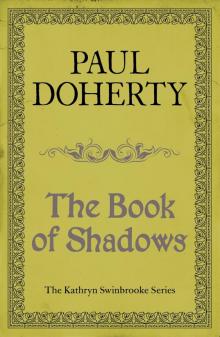 Book of Shadows
Book of Shadows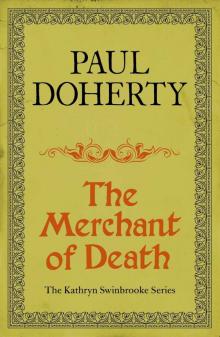 The Merchant of Death
The Merchant of Death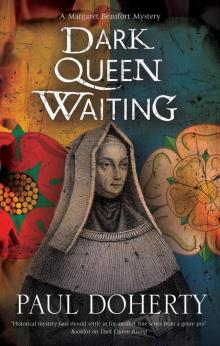 Dark Queen Waiting
Dark Queen Waiting Devil's Wolf
Devil's Wolf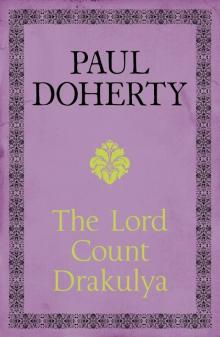 The Lord Count Drakulya
The Lord Count Drakulya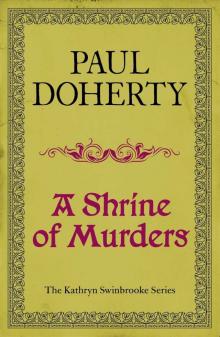 A Shrine of Murders
A Shrine of Murders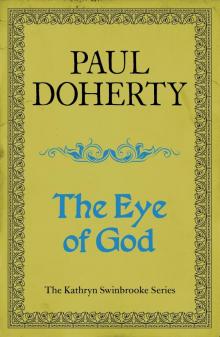 The Eye of God
The Eye of God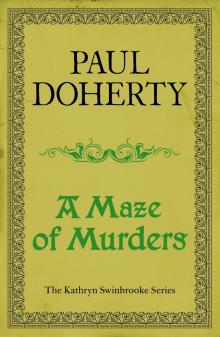 A Maze of Murders
A Maze of Murders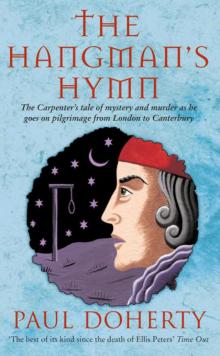 The Hangman's Hymn
The Hangman's Hymn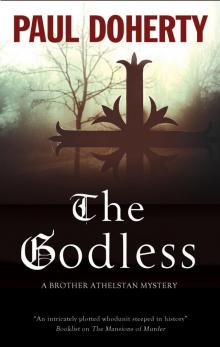 The Godless
The Godless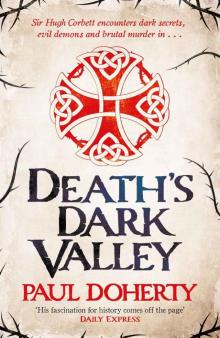 Death's Dark Valley
Death's Dark Valley Queen of the Night ar-4
Queen of the Night ar-4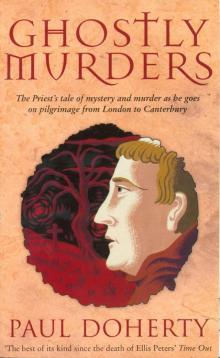 Ghostly Murders
Ghostly Murders Saintly Murders
Saintly Murders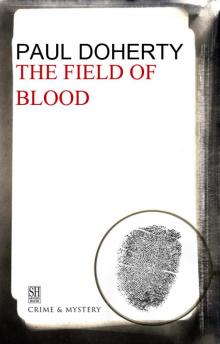 The Field of Blood
The Field of Blood Hugh Corbett 10 - The Devil's Hunt
Hugh Corbett 10 - The Devil's Hunt Assassin in the Greenwood hc-7
Assassin in the Greenwood hc-7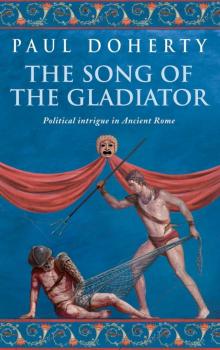 The Song of the Gladiator
The Song of the Gladiator Hugh Corbett 17 - The Mysterium
Hugh Corbett 17 - The Mysterium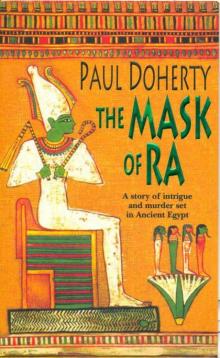 The Mask of Ra
The Mask of Ra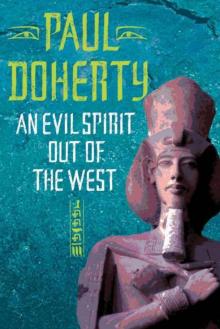 An Evil Spirit Out of the West (Ancient Egyptian Mysteries)
An Evil Spirit Out of the West (Ancient Egyptian Mysteries)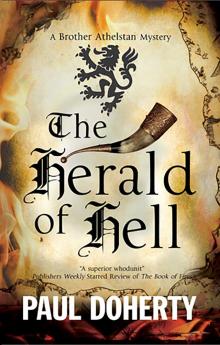 Herald of Hell
Herald of Hell Mathild 03 - The Darkening Glass
Mathild 03 - The Darkening Glass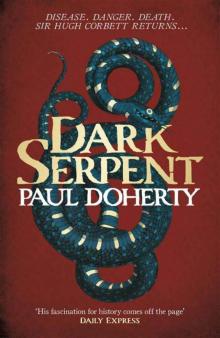 Dark Serpent (Hugh Corbett 18)
Dark Serpent (Hugh Corbett 18)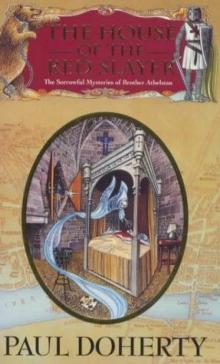 House of the Red Slayer smoba-2
House of the Red Slayer smoba-2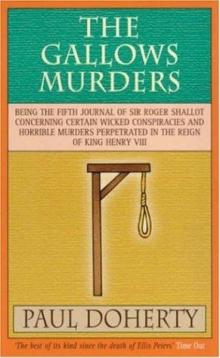 The Gallows Murders
The Gallows Murders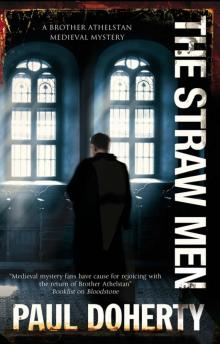 The Straw Men
The Straw Men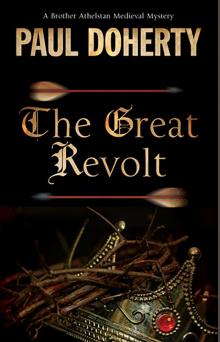 The Great Revolt
The Great Revolt The Rose Demon
The Rose Demon By Murder's bright light smoba-5
By Murder's bright light smoba-5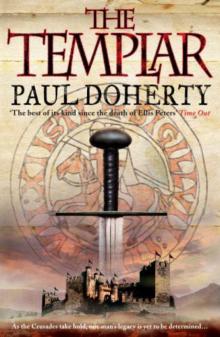 Templar
Templar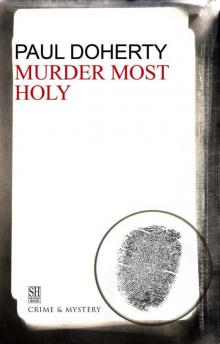 Murder Most Holy
Murder Most Holy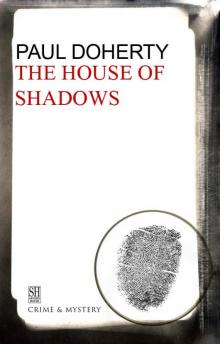 The House of Shadows
The House of Shadows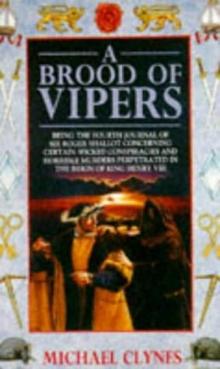 A Brood of Vipers srs-4
A Brood of Vipers srs-4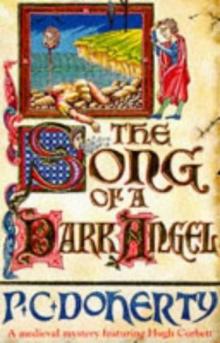 Song of a Dark Angel hc-8
Song of a Dark Angel hc-8 Satan in St Mary hc-1
Satan in St Mary hc-1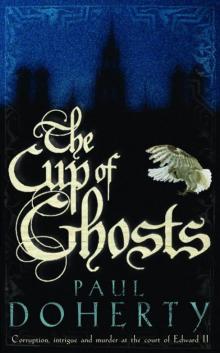 Mathilde 01 - The Cup of Ghosts
Mathilde 01 - The Cup of Ghosts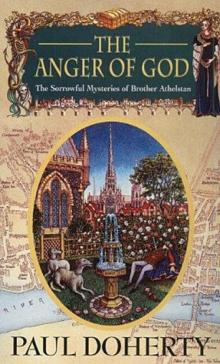 The Anger of God smoba-4
The Anger of God smoba-4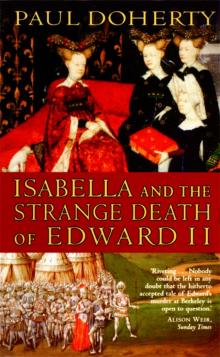 Isabella and the Strange Death of Edward II
Isabella and the Strange Death of Edward II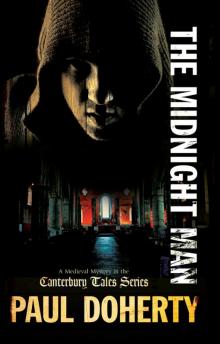 The Midnight Man ctomam-7
The Midnight Man ctomam-7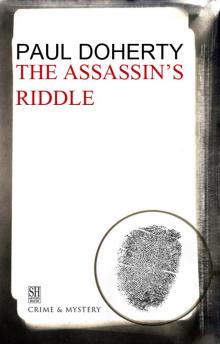 The Assassin's Riddle
The Assassin's Riddle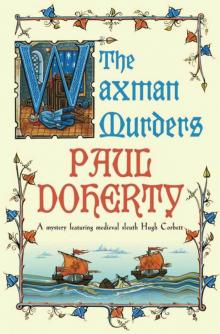 Hugh Corbett 15 - The Waxman Murders
Hugh Corbett 15 - The Waxman Murders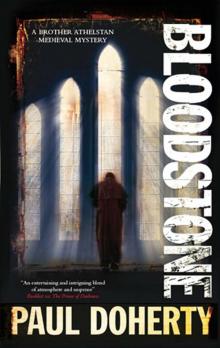 Bloodstone smoba-11
Bloodstone smoba-11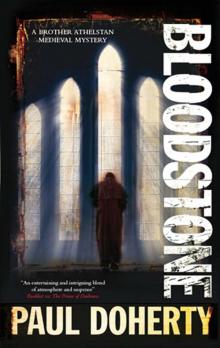 Bloodstone
Bloodstone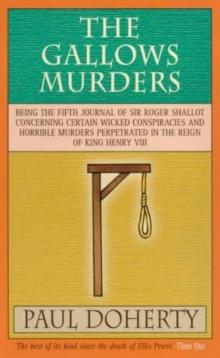 The Gallows Murders srs-5
The Gallows Murders srs-5 The Midnight Man
The Midnight Man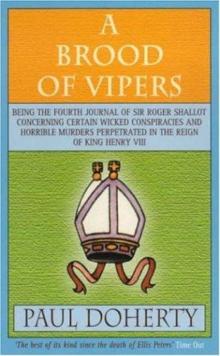 A Brood of Vipers
A Brood of Vipers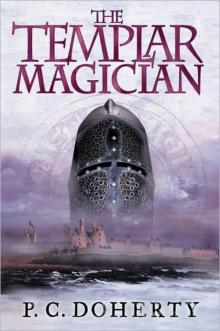 The Templar Magician
The Templar Magician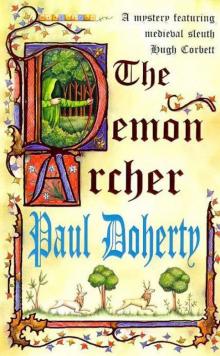 Hugh Corbett 11 - The Demon Archer
Hugh Corbett 11 - The Demon Archer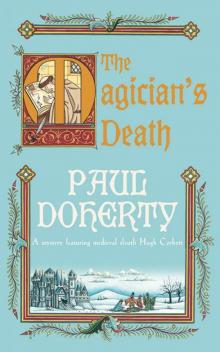 Hugh Corbett 14 - The Magician's Death
Hugh Corbett 14 - The Magician's Death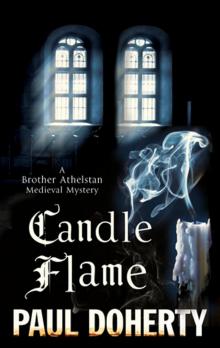 Candle Flame
Candle Flame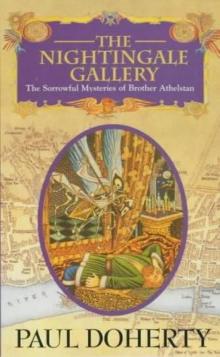 The Nightingale Gallery smoba-1
The Nightingale Gallery smoba-1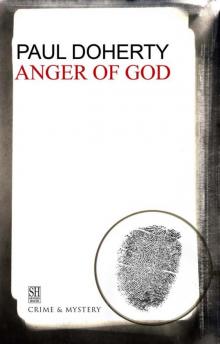 The Anger of God
The Anger of God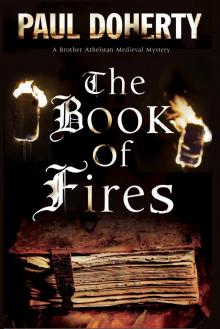 The Book of Fires
The Book of Fires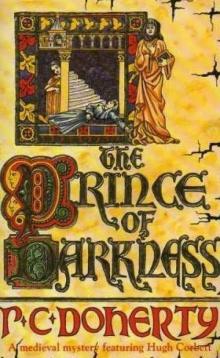 Prince of Darkness hc-5
Prince of Darkness hc-5 The House of Crows smoba-6
The House of Crows smoba-6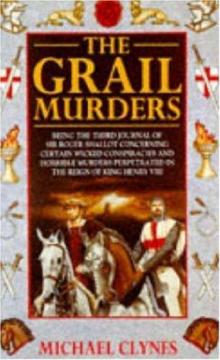 The Grail Murders
The Grail Murders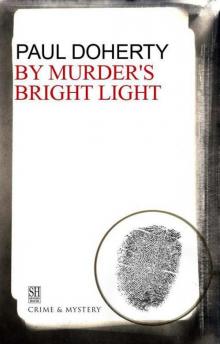 By Murder's Bright Light
By Murder's Bright Light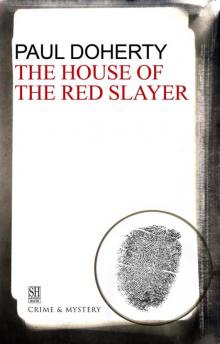 House of the Red Slayer
House of the Red Slayer The Devil's Domain
The Devil's Domain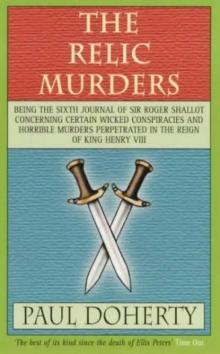 The Relic Murders srs-6
The Relic Murders srs-6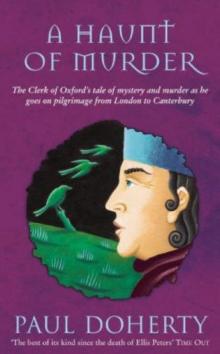 A haunt of murder ctomam-6
A haunt of murder ctomam-6 The Straw Men smoba-12
The Straw Men smoba-12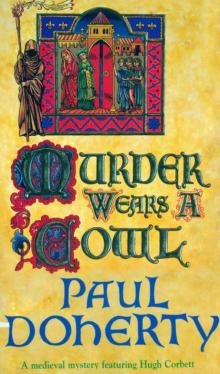 Hugh Corbett 06 - Murder Wears a Cowl
Hugh Corbett 06 - Murder Wears a Cowl An Ancient Evil (Canterbury Tales Mysteries)
An Ancient Evil (Canterbury Tales Mysteries)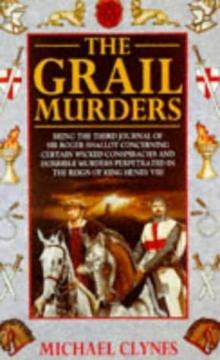 The Grail Murders srs-3
The Grail Murders srs-3 The Fate of Princes
The Fate of Princes The poisoned chalice srs-2
The poisoned chalice srs-2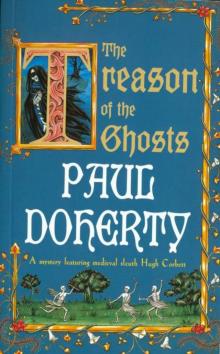 Hugh Corbett 12 - The Treason of the Ghosts
Hugh Corbett 12 - The Treason of the Ghosts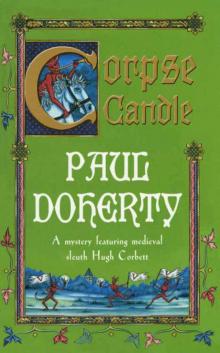 Hugh Corbett 13 - Corpse Candle
Hugh Corbett 13 - Corpse Candle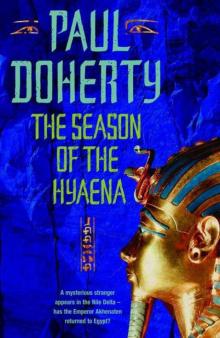 The Season of the Hyaena (Ancient Egyptian Mysteries)
The Season of the Hyaena (Ancient Egyptian Mysteries)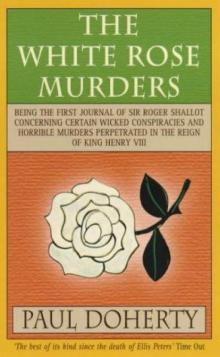 The White Rose murders srs-1
The White Rose murders srs-1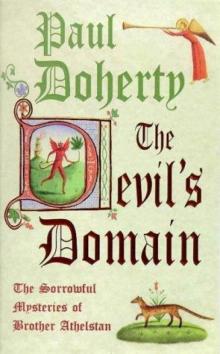 The Devil's domain smoba-8
The Devil's domain smoba-8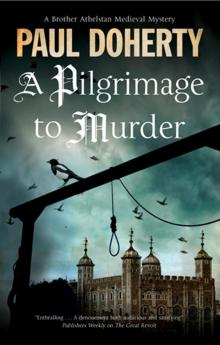 A Pilgrimage to Murder
A Pilgrimage to Murder Roseblood
Roseblood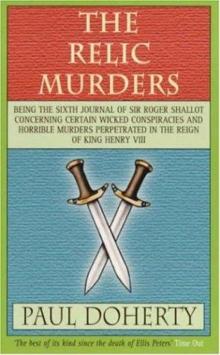 The Relic Murders
The Relic Murders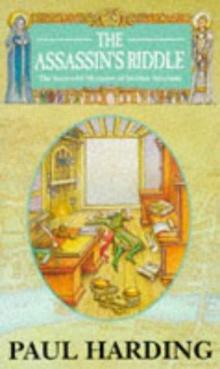 The Assassin's riddle smoba-7
The Assassin's riddle smoba-7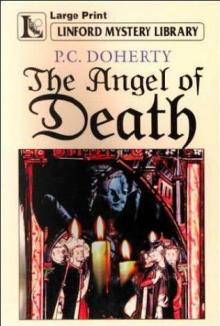 Angel of Death hc-4
Angel of Death hc-4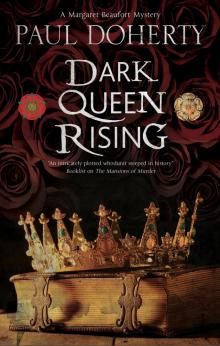 Dark Queen Rising
Dark Queen Rising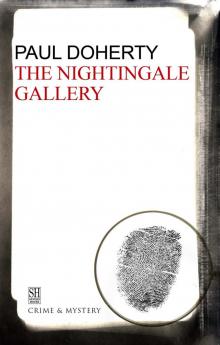 The Nightingale Gallery
The Nightingale Gallery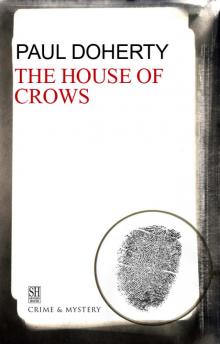 The House of Crows
The House of Crows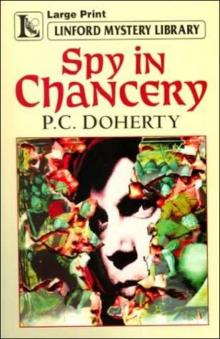 Spy in Chancery hc-3
Spy in Chancery hc-3